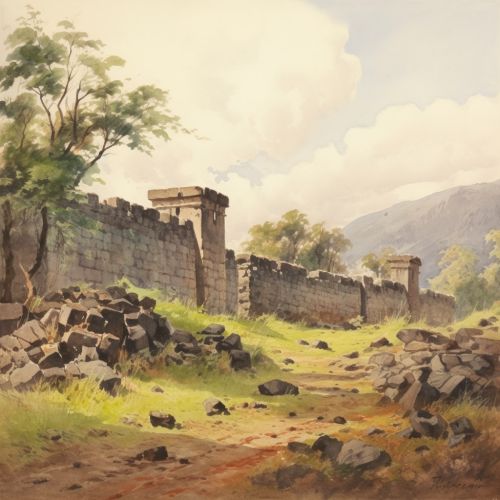Siege of Arcot
Background
The Siege of Arcot took place in the Indian subcontinent, during the Carnatic Wars between the British East India Company and the French East India Company, along with their respective Indian allies. The siege was a significant event in the early stages of the British Empire in India.
Prelude to the Siege
In the early 18th century, the Mughal Empire was in decline, and many regional powers were vying for control. The Carnatic region, part of present-day Tamil Nadu, was under the control of the Nawab of Arcot, a title bestowed by the Mughal emperor. The British and French companies, seeking to expand their influence, supported rival claimants to the Nawab's throne.


The Siege
The Siege of Arcot began in September 1751 when the British, led by Robert Clive, decided to capture the fort at Arcot in order to divert French forces away from their ally, Muhammad Ali Khan Wallajah, the Nawab of the Carnatic. The British force, numbering around 200 Europeans and 300 sepoys, managed to capture the fort with little resistance.
The French, allied with Chanda Sahib, the rival claimant for the Nawab's throne, responded by sending a force of 4,000 men to retake Arcot. The British, vastly outnumbered, prepared for a siege.
The Defense
The British forces, despite their small numbers, managed to hold off the French and their allies for 50 days. They made use of the fort's defenses, repairing walls and strengthening their position. The siege saw several attempts by the French to storm the fort, all of which were repelled.
The British also launched several successful sorties, disrupting the enemy's plans and boosting the morale of their own troops. The defenders were able to hold out until reinforcements arrived from Madras.
Aftermath
The successful defense of Arcot marked a turning point in the Carnatic Wars. It boosted the prestige of the British East India Company and marked Robert Clive's emergence as a military leader. The French and their allies were demoralized, and their Indian allies began to question their commitment.
The Siege of Arcot also had a significant impact on the larger conflict between Britain and France. It demonstrated the effectiveness of European military techniques, particularly the use of fortifications and disciplined troops, in the Indian context.
Legacy
The Siege of Arcot is often cited as a key event in the establishment of British rule in India. It demonstrated the military prowess of the British East India Company and marked the beginning of Robert Clive's illustrious career. The siege also highlighted the complex political landscape of India at the time, with multiple powers vying for control and forming alliances based on convenience rather than loyalty.
